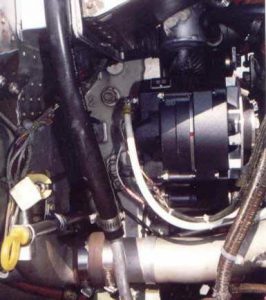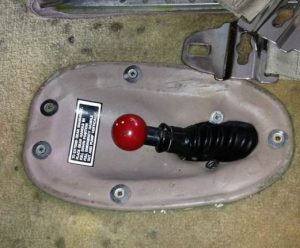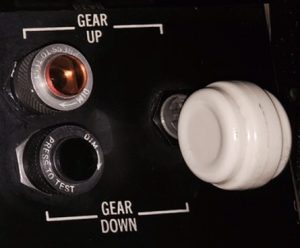I recently had an alternator failure.
First time and even though I read and heard about it, I was taken by surprise by a couple of things. Everything worked out fine with no problem. I learnt after the fact that an alternator failure is actually pretty common. A pilot friend had one just a week before and I was told they have a limited time span, so depending on how much you fly, it will happen to you. I would hope that sharing my experience will help you, handle the situation adequately. As always, I am looking forward to any comments and recommendations.
- How to detect an alternator failure
Might sound more obvious than it actually is. Some aircrafts might actually have an alternator failure signal. Mine doesn’t. An alternator failure manifests itself in the amperage gauge, where instead of showing a slight charge or a centered needle, it will show a discharge.I have a JPI engine monitor and it would also show me a declining voltage. First I thought, this was caused by me conducting a slow flight, but the voltage kept on falling. The trick is that at the beginning the voltage only slowly decreases. But there is a point where it suddenly accelerates and goes straight down, taken electrical systems with it. discharge indication in the amperage gauge and decreasing voltage are symptoms of an alternator failure. You should be turning to the next available airport.
- The aircraft keeps flying
The good news, the aircraft flies without electrical power. The spark plugs are engine driven and independent of the electrical system (thank you engineering) and the plane flies perfectly fine. That realization is kind of obvious when on the ground. When in the air, this confidence might diminish to “it should keep flying”. I wonder to what point instructors should incorporate electrical system failures into training. Turn of the master switch and see what happens. Obviously in a controlled environment, this might be memorable enough to boost your confidence when it actually happens. Even understanding what systems keep on working and what systems stop working, will be much more remembered when experienced. Don’t get me wrong, I am not proposing to do this on your own. I only wonder if it would add value to flight training and could be done in a safe way. - Equipment you lose
First of all, nothing happens. You are running on your battery a depending on the state of your battery you might be flying another hour without any failures. But once the battery is empty a couple of things happen. There are a couple of obvious ones. You will lose you panel mounted GPS like a Garmin 430. Some of these systems have backup batteries. If not, they will go out. With them your other radios and navigation systems (VOR, ILS). No lights, no transponder, no flaps, no turn and bank coordinator and no gear (the way you are used to). There is one, that took me a second to realize. At a certain point the fuel quantity indications starting going down. I still had 30 NM to go back to the airport and I was sure that I still should have around 2 hours equivalent of fuel, but watching the fuel quantity indicator needle move slowly to nothing and that happening at different times for the two separate tanks got me thinking. I remembered the pre-flight checklist where I would turn on the master switch and one of the checks was fuel quantity. Fuel Quantity indication is tight to the electrical system. No need to look for an alternate landing spot quite yet. The flaps are kind of obvious also, but it’s good to experience it to see it. I still moved the flaps handle down out of habit and well, nothing happened. - Things that keep functioning
Thanks to smart engineers, the airplanes have been designed to have redundant systems and the good news is that all the basic flight instruments keep on functioning. The artificial horizon is driven by a vacuum pump by the engine. Speed, altimeter, vertical speed indicator, all keep working. The gear usually has a backup system. More about that under the next bullet. Now I want to point something out here. I have the privilege to fly the same plane for the most part and have gotten to know this aircraft relatively well. I hear sounds, feel movements, pick up smells, etc. When the power went out, there was no sense to use the headset. As a matter of fact, it was in my way. I then realized that the sounds were different. I will fly without a headset on speaker radio from time to time, just to see what “normal” sounds like. - Go do a manual extension of your gear
If you fly a complex aircraft, gear extension is kind of a big thing. This is illustrated by this modified GUMPS checklist: G – Check the GEAR, U – Undercarriage check, M – MAKE sure the gear is down, P -PUT your hand on the gear switch, S – Make SURE the gear is down. Here is the real GUMPS checklist: G – gas – Fuel selector on the fullest tank, U – undercarrige – Down and locked, M – mixture – enrichen, P – prop – full forward, S – seatbelts – secure. In a Cessna 210 gear is pushed down through an electric pump that will push oil through hydraulic lines and get your gear down. With no electricity the pump has to be replaced with your muscles. The gear handle is between the two front seats similar the handbrake in cars.Do you know how many circles your gear needs? In the 210 its over 80 circles. Oh, and there is no green light to confirm the gear is down.
Still uncertain if the gear is down-down? I once ask my mechanic shop to call me in when they were testing the gear. I went to the show and pushed the gear down manually. I wanted to see how that would feel like. Not only do you learn what to expect, you also test your system and confirm that it’s still working! I would highly recommend any aircraft owner to do the same. It gave me confidence and I knew when to stop (other than counting the circles).
- Recommended back-up gear: handheld aviation radio, radio-powered GPS
My flight back has a couple of gadgets. I carry around a handheld radio and had it well charged. This kept me in contact with ATC at all times. When on the ground, I have realized that aircrafts could maybe pick up my audio around 5 NM away. In the air I was able to communicate with ATC as far as 30 NM away. I had a discussion with a pilot friend about this and he mentioned that this might actual increase if the mobile radio has a way to connect to the external antenna. I will investigate on this possibility and report back. Another thing going along with the above comment about learning “normal” sounds when flying without a headset. It might be useful to get an adapter so that the headset can be connected to the portable radio, so you don’t have to hold the radio against your ear while flying, pumping down your gear and trying to not get lost.
I fly with 2 battery powered GPS units (Garmin Aera 696 and 795). In addition, I had my iPad with IFR maps and terrain coloring. Not that I would ever hope to end of IFR with an alternator failure. Completely different animal.
A backup artificial horizon is a bonus. Like I say, I would not fly IFR without an alternator. But having the backup equipment under the reduces circumstances made me feel more comfortable. It doesn’t hurt I guess.
I was able to inform to ATC about my imminent power failure before it actually happened. I never lost communications with them and I was able to communicate via my handheld radio. ATC obviously lost some information on the radar, such as transponder code and associated aircraft information and the altitude read-out. But since I informed them before, they knew it was coming. Even though a valuable experience, the biggest learning I got out of this, the fact that I like to fly with all systems working. I like to have triple redundancy, I like to fly with the autopilot, I like to have two functioning on-board radios plus a backup, etc. etc. I like the cruising type of flying. So alternator has been repaired aneverything is back to normal again, until next time!
Wish you never-ending voltage!




